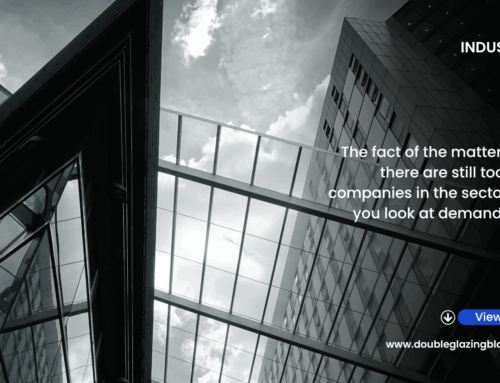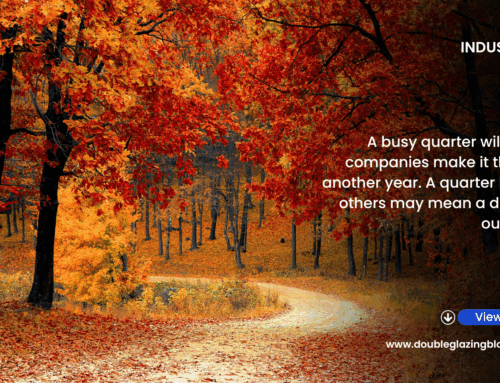There’s a fair bit of commentary about the state of the market right now. This week, I published a guest post from Aled Davies of Consort, who spoke about market instability and the importance of proper pricing and quality guarantees.
That then spurred some additional commentary from Mark Powell of Direct Trade (Yorkshire) on LinkedIn with analysis of low confidence levels and industry seemingly in an unstoppable race to the bottom. You can read his post by clicking here.
This is my two penneth.
It feels like 2009
I am sure many of you reading this remember the disaster of a year that was 2008. Northern Rock had just gone under here in the UK, then over in the US Lehman Brothers, one of the world’s biggest banks, nearly sent the entire global financial system into the abyss. The result was two years of economic hardship and years more of austerity that took a very long time to recover from.
The following year, in 2009, was the first full year that we all felt the after-effects of one of the worst economic episodes. Business activity was stagnant, companies were closing at a terrible rate, and credit conditions were terrible.
Sound familiar? Although no banks have gone under, the market at the moment is, without a doubt, in one of the most difficult spots since the GFC. Businesses are closing at a similarly horrific rate, with recognised names failing seemingly every week. Business activity is slow, no one can deny that, and I am glad to see the industry is finally acknowledging that in its public commentary. The market feels incredibly unstable at the moment, perhaps even more so than in 2009.
The causes of the current crisis are a mix of all sorts of things that have converged at the same time. In 2009, it was a Black Swan event with the failure of the banking sector, which caused that particular nightmare. Right now, we have a mix of post-pandemic financial hangover, wars on multiple fronts, soaring energy and food costs, rising taxes and rising labour costs. All of this is combining to keep consumer confidence and spending far lower than we would like it to be, whilst at the same time ensuring business costs keep increasing. It is not a good mix.
But we know all this. Social media, TV news and any other platform run these stories on a daily basis. So what, if anything, can be done about it?
Rational business planning
The aluminium market has long been one of the strongest niches within the wider sector for the last few years. Until now. When things got tough, what did we all do? Reverted to type and engaged in a race to the bottom on price in order to win work. We did this in the PVCu market for years, and as a result made it one of the least profitable parts of the market. We could have chosen to sell on quality and service, but that isn’t how we do things in the British market. We chose to go the lazy route and try to undercut each other.
Then hard times came, and it pulled the rug from many companies. We could have learned from our past experiences and told ourselves not to do the same thing in the aluminium market. But we didn’t. Now hard times have come around again, and we go back to the same failed methods of the past and have once again engaged in a race to the bottom on price.
The idiotic thing is, we didn’t have to. The general public is conditioned to expect aluminium to be a more expensive product; therefore, price was a secondary element, where quality and service should have been first. But frankly, we’re not smart enough to do anything else, so we went back to the insanity of undercutting.
Week after week, we get emails from suppliers offering glazed or unglazed bi-folding doors at ridiculous prices per lead. Sliders are now getting the same treatment as well. Prices that are so low, you know that no money can possibly be made from those prices. Yet, the industry does it anyway. Then we’re surprised when another big name goes to the wall. Madness.
The antidote to market turmoil and last-gasp insanity pricing is to keep a calm head and ensure your business maintains a good margin. I know that is easier said than done in times like these, but we have seen the results of the opposite of this, so it cannot be any worse than that.
Rational business plans have to lead the way. Now that may mean cost-cutting measures, which may be tough but necessary. It may mean that jobs have to be shed or merged to cut costs. It may mean efficiencies across the business have to be found to make things swifter and more productive. Deadwood will have to be cut away. I urge companies to do all of that before simply resorting to a massively failed tactic of undercutting. It will not keep you in business.
Profitability before undercutting
You would think we wouldn’t have to talk about this, considering how many times we have been through this cycle, but profit has to be the number one priority of any business during difficult periods. It is literally the lifeblood of a company, which sustains employment, investment, budgets, the ability to pay bills and a ton of other things. If you think you’ll forget that, print out the word profit in big black letters and stick it on your wall in front of you.
The reality for many, however, is that their fate is perhaps already sealed. If your competitors are trying to win business from you based on price alone, it means they’re likely in a worse position than you are, and they will be in a far more precarious position than you are. Hold your nerve. Win business profitably. Sell it on quality and service. If you make that argument well enough, it should be enough to persuade your client to place their business with you.
I am of the opinion that the second half of this year will be as brutal as the first. We’ll continue to see established companies fail and we’ll continue to see companies resort to failed tactics in a desperate attempt to keep the doors open.
What I hope we will see is increased discussion within the sector about running our businesses more sensibly, with rational and calm heads, with profitable business placed at the forefront of all business activity. What I hope to see is more creative ideas about to generate leads and win new business, with undercutting confined to the lazy and irresponsible.
How long will this cycle last? I feel like we have been in this cycle for at least two years now. It may have a couple more years to run. The economy needs a catalyst to kick-start something. Sadly, I don’t believe the Government are making the right decisions, which will see that happen. We may have to endure more pain before we see light at the end of the tunnel. If this turns out to be the case, it means profit has to be even more of a focus than ever before.
Opportunities will still exist, they always do. The companies that are genuinely motivated and focused will find them. There will be success stories too. But we also have to be realistic and come to terms with the idea that success this year may well just be surviving, rather than just hitting targets.
Subscribe for FREE below to receive the weekly DGBulletin newsletter and monthly digital magazine!








This is incorrect!
Focus FIRST on customer service, and ethical trading.
Many of those who are struggling have focused first on profitability. It is a common trend that these companies are the first to cut prices and cut corners (and often go under, undermining trust).